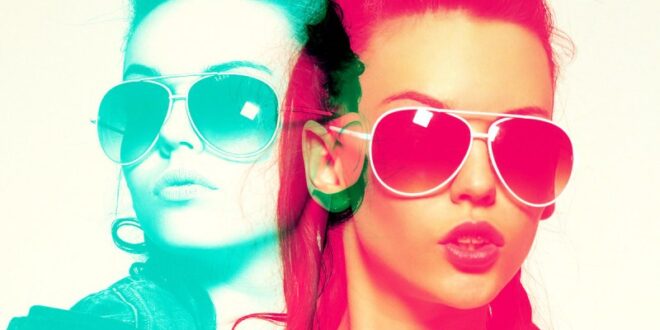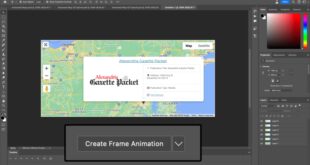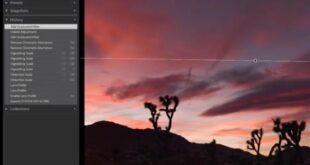How To Create A Surreal Double Exposure Effect In Photoshop – In this tutorial, I’ll show you how to create a double exposure effect in Photoshop. The double exposure effect can be achieved by combining multiple images, experimenting with blending modes and using adjustment layers. We’ll also learn how to create transitions between multiple images and blend them nicely using a layer mask.
Double exposure photography is a technique that involves combining two or more exposures to create a single image. Combining two exposures or images is a great way to get creative. If you want to create powerful effects or surprise a client, multiple exposures can help you achieve this.
How To Create A Surreal Double Exposure Effect In Photoshop
Once you understand the process, you can integrate one photo into another, such as landscapes into portraits, creating levitation and other conceptual effects. Double exposure has come a long way since the dawn of cinema. Using Photoshop, we can quickly combine multiple exposures to tell a story or express a message.
Double Exposure Kit For Photoshop
The contrast between light and dark is very important. You can also use different blending modes to show either bright areas or only dark areas in the image. Contrast is the key difference between subject and background and separates images from one another. What you really need to do is make sure you choose images that have enough contrast between the subject and the background so that you can create a difference.
Take pictures of subjects that are dark and the background is blurred as much as possible, or try to get a clear background behind the subjects. Most of the time we will use the Dodge or Screen blending mode to create a multiple exposure effect in Photoshop. So let’s say we have one image and add more light to it. If your image of an object is very bright to begin with and we add more light to it, then it will either be very bright or we won’t see much information.
Always take pictures with dark areas so you can play with the shadows when creating the double exposure effect, so don’t light them from the front.
The subject is very important when creating multiple exposure effects. You can’t randomly pick images and want them to complement each other. It would be best to choose images that are connected to each other and lead to a narrative. You can design an image with epic landscapes and rich texture. You can also create conceptual effects such as levitation, dense forests, glittering cityscapes and more.
Double Exposure Lightroom: Master Creative Overlays
You can also get many double exposure ideas on Pinterest to get the best ideas for your subject.
There are many tests you can take if you have a specific topic in mind. You can go and take base images and photos of the layers that you will merge. You don’t have to be a photographer to take photos today: you can download tons of test images from these 19 copyright-free image sites and start working in Photoshop right away.
Once you’ve chosen the images to combine, you can start working on retouching the subject, removing the background, and finally move on to the composition stage where you’ll create your own breathtaking works of art.
Blending modes are the most powerful tools in Photoshop that allow you to quickly blend images. In Photoshop, you can test many images by simply changing the blending mode of a layer to find what works best for your creative work.
20 Double Exposure Tutorials For Photoshop
For example, before making this Photoshop tutorial, I played around with blending modes to get the best results.
For this tutorial, I’m using a picture of an old man, but you can choose your own. You can also use the image as a silhouette or almost dark so that the blending mode gives you the effect you want.
Also, make sure that any image you use should have a solid background, which means there should be no detail on it.
As already said, we should use an image with a neutral background, but there are always problems when using images from free sites. In my case the background is solid but not white.
Double Exposure: How To Create Multiple Exposure Images Step By Step
The goal here is to white out the background so that the city we will add later is only visible on the old man and not in his background.
Since we applied the effect to the entire image, it will obviously affect many other parts that we don’t need. The best solution is to mask the effect on the image where we don’t need it. Don’t forget to leave the highlight effect on the hair because we need some light to create the highlight effect.
On the Curves layer mask, mask the effect on the selected parts. Because we applied the curves to the background, not the old man. Use a soft round black brush for masking.
In this step, we’ll create a double exposure effect by adding an image of the city and then blend it properly using the blending mode. Also, this step can be experimental for you, for example, you can try adding different photos here to see which photo gives you the best results. So feel free to choose the images you like: it can be a city, stream, forest or any image.
How To Create A Double Exposure Effect In Photoshop
Place the image of the city in the main document. Use the Transform Tool (CTRL +T) to enlarge it and make it fit nicely in the main document, as shown below.
This step aims to amplify the effect we have already created. Let’s make the picture more surreal by revealing the old man’s beard.
Activate the Brush Tool (B). Set the Opacity and Flow to about 30%. Now mask selected parts of the city image as shown below to reveal the old man’s beard and some parts of his face. This will create a surreal effect, as if his chin is hanging over the road. You can also reveal other parts if you want.
Try to achieve a smooth transition between the image of the old man and the city. Take your time and do it patiently.
Surreal Photoshop Techniques
Create a new layer and name it “Birds”. Download bird brushes and paint some birds as shown below. Feel free to draw them wherever you want.
This will give the image a surreal effect and be sure to add other elements like mountains, clouds, forests, trees or anything else that will give your image a surreal look like I did below by adding birds and it will look more surreal.
Lower the opacity of the birds layer to 60% and fill them with city light. This will also help us fit the birds into the lights we will create in the next step.
Create a new layer and name it “Light”. Set the foreground color to #5a4119. Now, using a soft round brush, paint some lights as shown below. Use a larger brush to paint the light.
Creative Double Exposure [man And Climbing The Stairs] — Hive
Thanks for studying the lesson. To create a double exposure effect, try experimenting with your images, blending them together using blending modes and adjustment layers as you’ve already seen in the steps above. Share, like, tweet if you really like it and feel free to let me know if you need help. Have a nice day! Double exposure is a photographic technique that involves exposing a single frame of film or digital sensor to multiple images. Traditionally, this method is achieved by taking two separate photos in one frame. The result is a combined image in which elements from both exposures coexist in the same frame.
This effect can be easily achieved using post-processing software, which gives photographers more control and flexibility when creating surreal and dreamlike images.
The double exposure style is versatile and can be used for a variety of artistic and expressive purposes. Here are some of its notable uses:
Artistic Expression: Double exposure allows artists and photographers to create visually vivid and surreal images that go beyond traditional photography. It provides a unique way to combine two separate visual elements in one shot, resulting in a composition that is often dreamlike, abstract or emotionally evocative.
Double Exposure Effect In Photoshop.
Narrative Complexity: This technique is effective for conveying complex stories or multi-layered narratives in a single image. By combining different scenes or subjects, photographers can convey a deeper, more complex message, encouraging viewers to interpret and explore the visual story within the frame.
Symbolism and metaphor. Double exposure allows for the use of symbolism and metaphor by combining different elements to represent deeper meanings or concepts. The juxtaposition of images can create a metaphorical language within a photograph, allowing for a more subtle and symbolic representation of ideas or emotions.
Emotional impact. Double exposure can heighten the emotional impact of an image by mixing different scenes or expressions. This technique can evoke a feeling of nostalgia, mystery or introspection, depending on the choice of elements and the overall composition.
In general, the double exposure style is good for
 Alveo Creative Blog Guiding users through techniques for enhancing images, retouching portraits, and mastering popular editing software
Alveo Creative Blog Guiding users through techniques for enhancing images, retouching portraits, and mastering popular editing software




